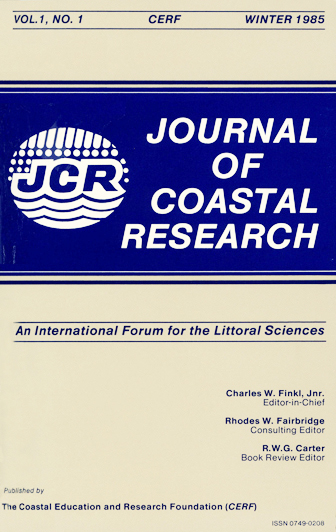The Effects of Houses and Sand Fences on the Eolian Sediment Budget at Fire Island, New York
Keywords:
Barrier island, dune, eolian transport, Fire Island, sand fence, sediment budget,Abstract
This study was conducted to identify the effects of houses and sand fences on dune dynamics on a moderately developed barrier island. Wind velocity data gathered beneath and around buildings built on pilings in the dunes revealed that isolated buildings considerably reduced the average velocity of winds. Cumulative sand surface elevation changes during the 102 day period were less than 7.6 cm. A simulation of the sediment budget revealed that 1.9 cm. of sediment per 10 linear meters of dune crest would be deposited landward of the dune crest under natural conditions. Houses constructed on pilings at a 25% linear density along the crest reduce the natural rate of deposition by 13.8%. If houses are constructed directly on the dune surface at a frontage density of 43% and protected using sand fences, the natural rate of eolian transport would be reduced by 67.5%. Structures built on or near the dune crest cause a local increase in the height of the dune and reduce the inland migration of the dune. Even a moderate level of development can strongly affect sediment transfers, and performance criteria should be developed for new shorefront buildings to insure maintenance of important characteristics of the natural system.


